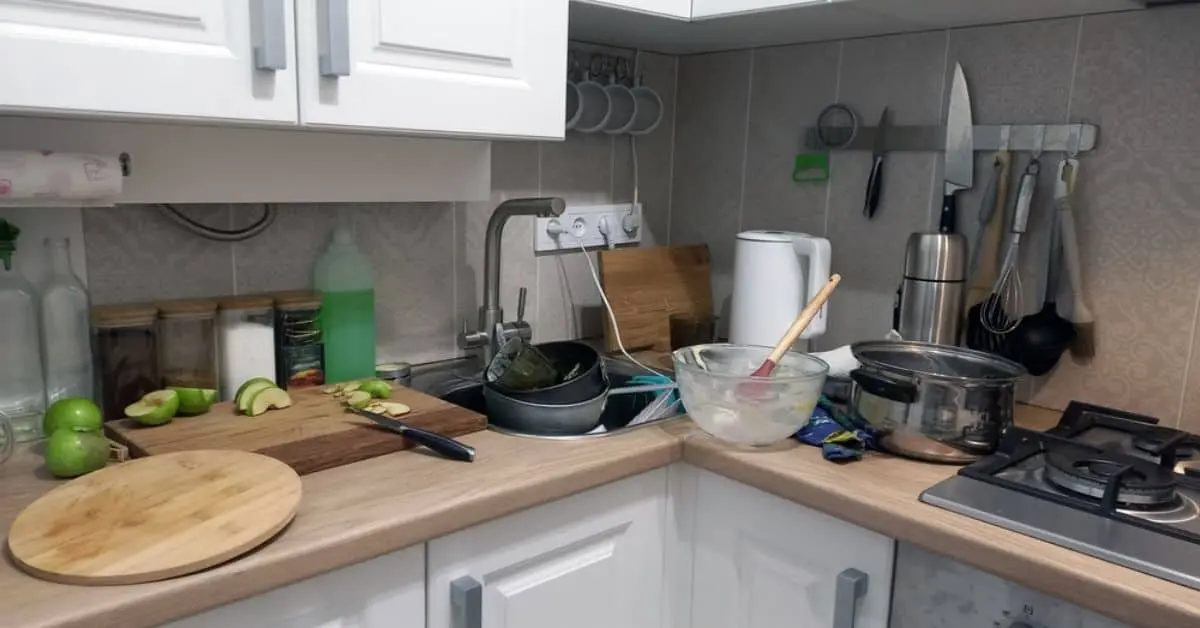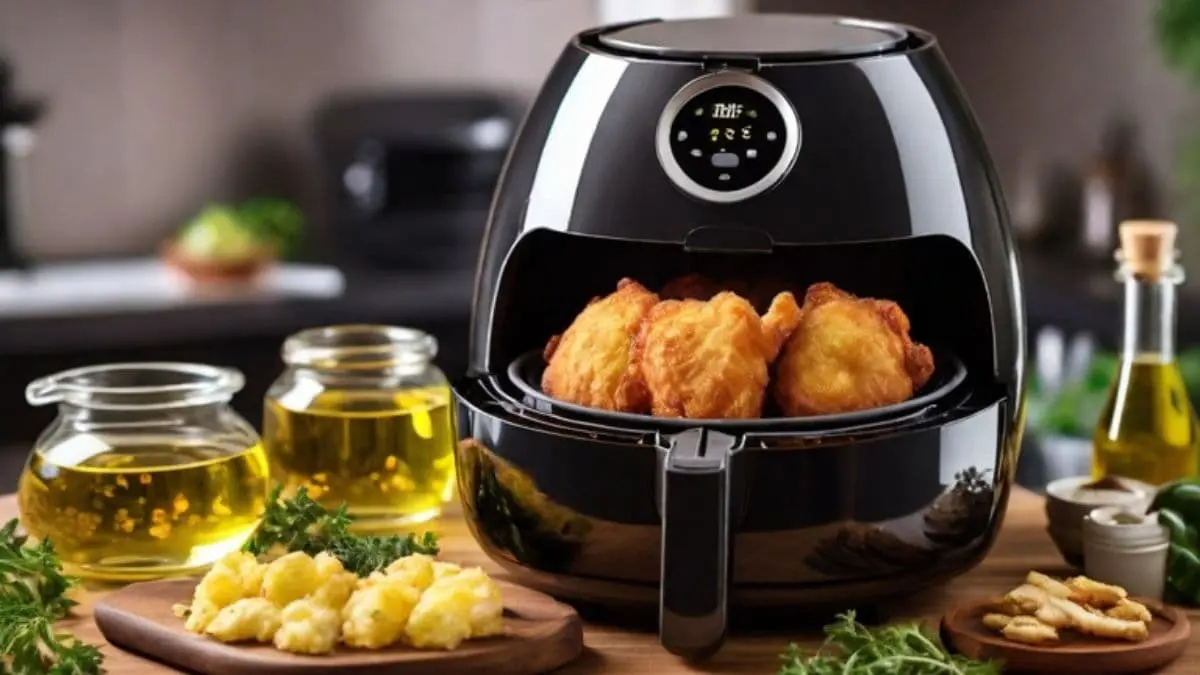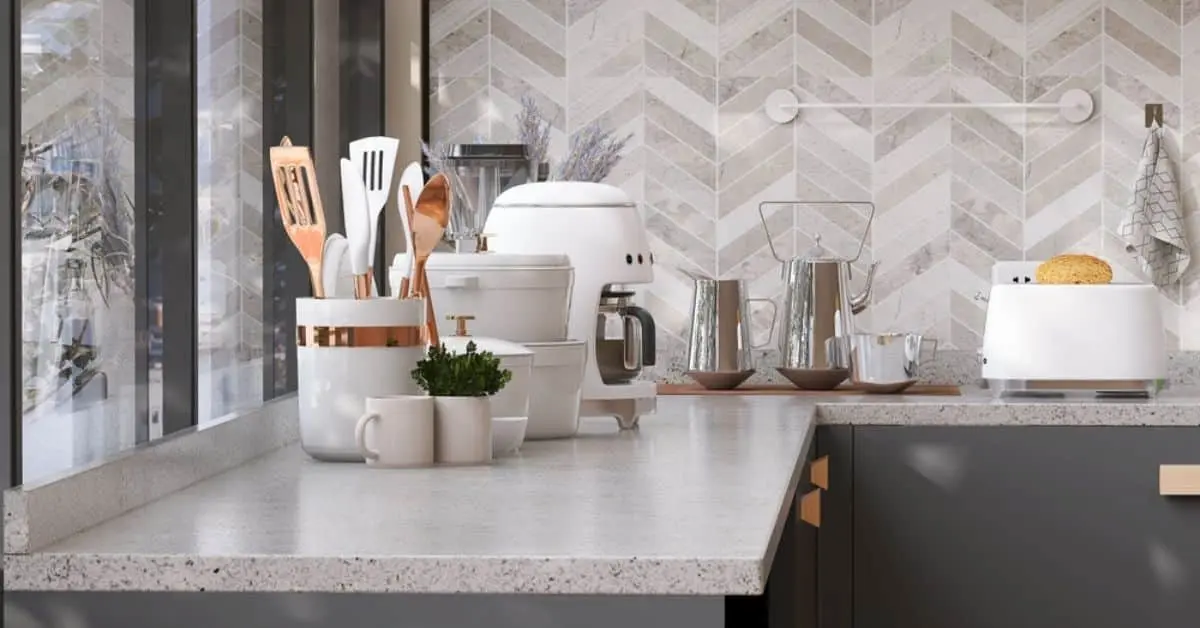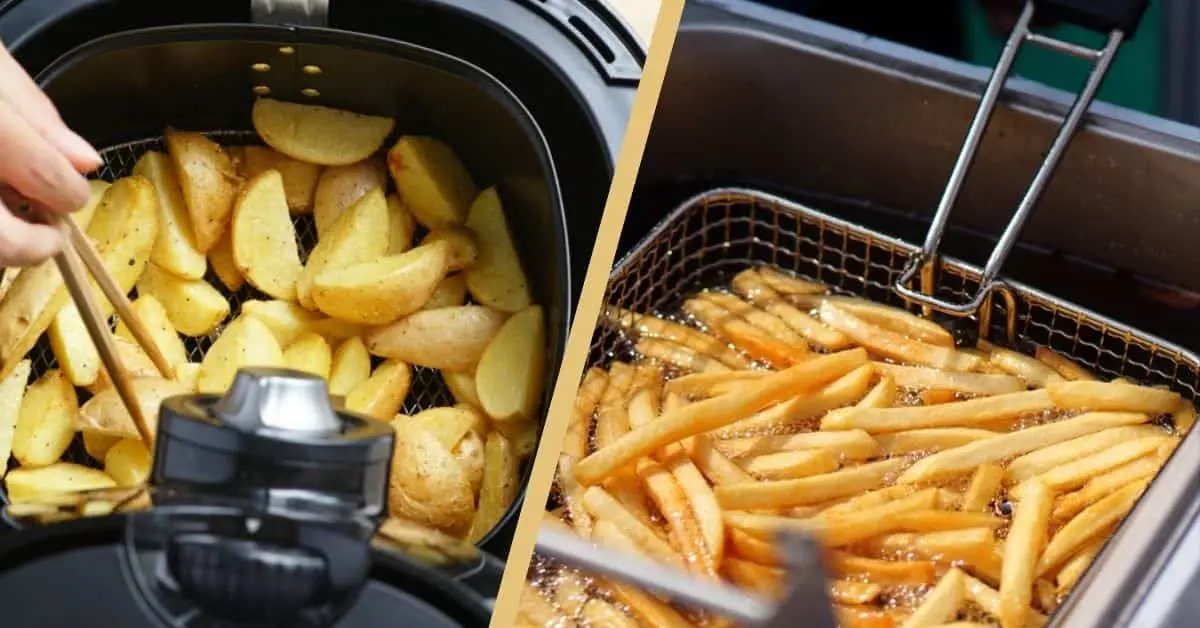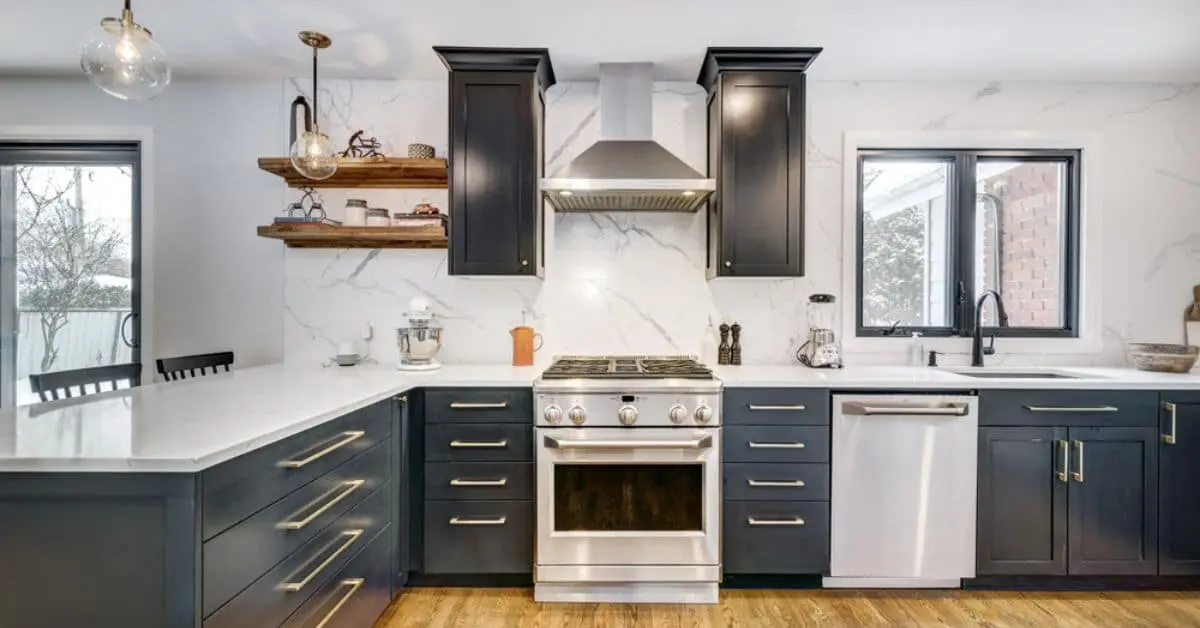Does your kitchen feel more like a chaotic mess than a functional cooking space? You’re not alone. Between overflowing drawers, cluttered countertops, and a pantry packed with who-knows-what, it’s easy for things to get out of control.
A cluttered kitchen doesn’t just look messy—it makes cooking stressful, wastes time, and even leads to food waste when you can’t find what you need. The good news? Decluttering doesn’t have to be overwhelming. With the right approach, you can transform your kitchen into an organized, efficient space that makes meal prep easier and more enjoyable.
This guide will walk you through simple, practical steps to declutter your kitchen once and for all. Whether you have a tiny apartment kitchen or a spacious chef’s dream, these strategies will help you maximize space, get rid of unnecessary items, and maintain a clutter-free setup.
Ready to get started? Let’s dive in.
Why Decluttering Your Kitchen Matters
A cluttered kitchen isn’t just an eyesore—it affects your daily life in ways you might not even realize. From making meal prep harder to creating unnecessary stress, a messy kitchen can seriously impact your routine. Here’s why decluttering is worth the effort.

Cooking Becomes Faster and Easier
Ever wasted time digging through drawers looking for a spatula? Or had to move a dozen things just to find your favorite pot? A clutter-free kitchen makes cooking quicker, easier, and more enjoyable because everything is in its place.
Less Stress, More Peace
Messy spaces can be overwhelming. When your kitchen is cluttered, it adds to mental chaos. A well-organized kitchen, on the other hand, creates a sense of calm. You’ll actually want to cook instead of feeling drained before you even start.
More Counter Space to Work With
Counters covered with appliances, utensils, and random junk make meal prep frustrating. Decluttering clears up valuable space, giving you room to chop, mix, and cook comfortably.
Better Food Organization = Less Waste
An overcrowded pantry or fridge means food gets lost and forgotten, leading to expired ingredients and wasted money. When your kitchen is decluttered, you can see what you have, plan meals better, and reduce food waste.
Easier Cleaning and Maintenance
A clutter-free kitchen isn’t just easier to cook in—it’s also easier to clean. Fewer items on counters mean fewer things to wipe around, and an organized pantry means no more expired food spills lurking in the back.
A More Inviting Space
Whether you’re cooking for yourself or hosting guests, a clean, organized kitchen is more inviting. Instead of feeling embarrassed about the mess, you’ll actually enjoy spending time in the space.
Decluttering your kitchen isn’t just about looks—it’s about function, efficiency, and peace of mind. And once you do it, you’ll wonder how you ever lived with the mess!
Signs Your Kitchen Needs Decluttering
Not sure if your kitchen needs a serious declutter? Sometimes, we get so used to the mess that we don’t even notice it anymore. But if any of these signs sound familiar, it’s time to roll up your sleeves and start clearing things out.

You Can’t Find What You Need
If you’re constantly digging through drawers or shuffling things around to grab a specific pot, knife, or ingredient, your kitchen is overdue for an organization session. Cooking should be quick and efficient, not a scavenger hunt.
Your Countertops Are Always Full
Do your counters double as storage? If small appliances, mail, spices, or other random items have taken over your workspace, it’s a sign that your kitchen lacks proper organization. Clearing off your countertops instantly makes your kitchen feel bigger and more functional.
Your Cabinets and Drawers Are Overflowing
Opening a cabinet shouldn’t feel like a risky move. If things come tumbling out every time you grab a plate or pull open a drawer, you’re dealing with too much stuff and not enough order.
You Have Expired or Duplicate Items in Your Pantry
A cluttered pantry makes it easy to forget what you already have, leading to food waste and unnecessary purchases. If you find multiple open bags of rice, expired spices, or mystery cans from years ago, your pantry needs a refresh.
You Own Too Many Gadgets You Never Use
Do you have a popcorn maker, a quesadilla press, or a juicer gathering dust? While kitchen gadgets can be fun, too many single-use appliances take up valuable space. If you haven’t used it in the last year, it might be time to let it go.
You Avoid Cooking Because It Feels Overwhelming
If cooking feels stressful before you even start, clutter could be the culprit. A chaotic kitchen makes meal prep harder, slower, and less enjoyable. Decluttering can bring back the joy of cooking.
Cleaning Takes Way Too Long
A cluttered kitchen isn’t just hard to use—it’s hard to clean. If wiping down the counters involves moving a dozen things first or washing dishes feels like a puzzle, simplifying your kitchen will make daily maintenance so much easier.
If any (or all) of these sound familiar, don’t worry—you’re not alone. The good news? Decluttering your kitchen is totally doable, and once you start, you’ll wonder why you didn’t do it sooner.
Step-by-Step Guide on How to Declutter Your Kitchen
Decluttering your kitchen doesn’t have to be overwhelming. The key is to tackle it step by step. Instead of randomly shuffling things around, follow this structured approach to clear out unnecessary items, maximize space, and create a kitchen that’s both functional and inviting.

Step 1 – Empty and Assess Your Kitchen
The first step is to take everything out. Yes, everything. Empty your cabinets, drawers, pantry, and even your fridge. It might look like a disaster at first, but trust the process.
Once everything is out in the open, take a good look at what you have. You’ll probably find items you forgot existed, duplicates of the same utensils, and food that expired long ago. Group similar items together—cookware in one place, utensils in another, pantry staples in a separate pile. This will help you see how much of everything you own and what needs to go.
At this stage, don’t get distracted trying to organize yet. The goal is to see the full picture before deciding what stays and what goes.
Step 2 – Categorize and Decide What to Keep, Donate, or Discard
Now that everything is out, it’s time to make decisions. Pick up each item and ask yourself a few simple questions:
- Do I use this regularly? If it’s something you reach for often, it stays.
- Is it in good condition? Broken appliances, chipped plates, or utensils that have seen better days should go.
- Do I have duplicates? No one needs five spatulas or three toasters. Keep the best, donate or discard the rest.
- Does this item serve a real purpose? Single-use gadgets (like a banana slicer or hot dog toaster) take up space but rarely get used. If it’s been collecting dust, it’s time to let it go.
Create three piles: keep, donate, and discard. Items that are still in great condition but don’t serve you anymore can be donated to local shelters or second-hand stores. Anything broken or expired should go straight to the trash.
Be ruthless. The goal is to free up space for the things you actually use and love.
Step 3 – Optimize Kitchen Storage for a Clutter-Free Space
Now that you’ve narrowed down what stays, it’s time to put everything back in a way that makes sense. Smart storage is key to keeping your kitchen organized long-term.
- Use clear storage bins for the pantry so you can see exactly what’s inside. No more buying extra bags of rice because you didn’t know you already had some.
- Install drawer dividers to keep utensils and small gadgets in order. No more messy “junk drawers” filled with random odds and ends.
- Make use of vertical space by adding wall-mounted shelves, hanging racks, or pegboards for pots, pans, and cooking tools. This frees up cabinet space and makes grabbing what you need easy.
- Stackable storage containers work wonders in cabinets and pantries, maximizing shelf space while keeping things neat.
- Lazy Susans are great for organizing spices, condiments, or oils, giving you easy access without knocking things over.
Put frequently used items within easy reach, while storing seasonal or rarely used items higher up or in less accessible spaces. Your kitchen should work for you, not against you.
Step 4 – Organize Your Countertops Efficiently
Counter space is prime real estate in any kitchen. Keeping it clutter-free makes meal prep easier and gives your kitchen a cleaner look.
Start by removing anything that doesn’t belong. Mail, keys, and other non-kitchen items should be stored elsewhere. Then, be intentional about what stays on the counter. Small appliances like coffee makers and toasters are fine if you use them daily, but everything else should be stored away.
If you have a habit of leaving spices, cooking oils, or utensils out, consider using a tray or small organizer to keep them tidy. A simple basket for your most-used items keeps things accessible without making the space look chaotic.
The less you keep on the counter, the bigger and more functional your kitchen will feel.
To maintain a clean and organized kitchen, it’s important not just to declutter but also to arrange your appliances efficiently. If you’re looking for tips on organizing your kitchen appliances and maximizing countertop space, check out our guide on How to Arrange Appliances on Your Kitchen Counter.
Step 5 – Maintain a Decluttered Kitchen with Daily Habits
Decluttering once is great, but the real challenge is keeping it that way. Without a maintenance plan, clutter will creep back in before you know it.
- Clean as you cook. Instead of letting dishes pile up, wash or load them into the dishwasher as you go.
- Do a quick daily reset. Take five minutes at the end of each day to clear counters, put things back in their place, and wipe down surfaces.
- Adopt the “one in, one out” rule. Every time you buy a new kitchen tool or gadget, get rid of an old one to prevent excess buildup.
- Check your pantry weekly. Toss out expired items and organize as needed so things don’t pile up.
- Declutter seasonally. Every few months, take a fresh look at your kitchen and repeat the decluttering process as needed.
Smart Storage Solutions to Keep Your Kitchen Organized
Decluttering is only half the battle—keeping your kitchen organized long-term requires smart storage solutions. The key is to maximize every inch of space while keeping things accessible and easy to find. Here’s how you can transform your kitchen into a clutter-free, functional space.
Use Vertical Space to Your Advantage
Most kitchens have plenty of unused vertical space, both in cabinets and on walls. Instead of cramming everything into drawers, use wall-mounted storage and hanging organizers to free up counter space.
- Install floating shelves to store frequently used items like spices, mugs, or small kitchen tools.
- Use a pegboard to hang pots, pans, and utensils, keeping them within easy reach.
- Hang a magnetic knife strip on the wall instead of using a bulky knife block on the counter.
- Add hooks under cabinets to store mugs or cooking tools.
By going vertical, you create more space without adding clutter.
Optimize Cabinet Storage with Stackable Organizers
Cabinets can quickly become messy if everything is just thrown in. Instead of stacking dishes and hoping for the best, use stackable shelves, organizers, and pull-out drawers to keep things tidy.
- Shelf risers double your storage space, letting you stack plates, bowls, and cups without creating a jumbled mess.
- Pull-out drawers or baskets in lower cabinets make it easy to grab pots, pans, and baking sheets without having to dig through piles.
- Lazy Susans work wonders in corner cabinets, making it easy to access spices, condiments, and small jars.
- Door-mounted racks are perfect for storing cutting boards, foil, and plastic wrap inside cabinet doors.
Declutter Drawers with Dividers and Organizers
Drawers can easily turn into cluttered black holes if you’re not careful. Instead of tossing everything in randomly, use dividers and organizers to keep things in order.
- Utensil drawer organizers keep spoons, forks, and knives neatly separated.
- Expandable drawer dividers help organize larger kitchen tools like spatulas, tongs, and whisks.
- Small bins or trays are great for storing measuring spoons, clips, and other tiny kitchen essentials.
When everything has a designated space, it’s easier to find what you need and keep drawers from becoming chaotic.
Maximize Pantry Space with Clear Containers and Labels
A messy pantry leads to food waste and frustration. Instead of dealing with half-empty bags of flour and mismatched boxes, invest in clear storage containers to keep dry goods fresh and organized.
- Use airtight containers for flour, sugar, pasta, and snacks to keep them fresh and visible.
- Label everything so you always know what’s inside (and when it expires).
- Group similar items together—keep baking supplies in one section, snacks in another, and canned goods in a separate area.
- Use stackable bins or baskets to create more space on shelves and keep small items from getting lost.
A well-organized pantry not only looks great but also makes meal planning and grocery shopping easier.
Invest in Space-Saving Storage for Small Appliances
If your countertops are cluttered with appliances, consider finding smarter ways to store them when they’re not in use.
- Use a rolling cart to store appliances like blenders, air fryers, or coffee makers. When needed, just roll the cart out instead of keeping everything on the counter.
- Install pull-out shelves in cabinets for heavier appliances like slow cookers or stand mixers, making them easier to access.
- Utilize appliance garages (small cabinet spaces with sliding doors) to keep items like toasters and coffee makers tucked away when not in use.
This approach keeps your kitchen functional without sacrificing space.
Don’t Forget Under-the-Sink Storage
The area under the sink is often one of the most cluttered spaces in the kitchen. To keep it organized:
- Use stackable bins to separate cleaning supplies, sponges, and trash bags.
- Install a tension rod to hang spray bottles, creating more space below.
- Add pull-out baskets to easily access everything without rummaging through the mess.
To maintain a clutter-free kitchen, it’s essential not only to declutter but also to store your appliances properly. If you’re wondering how to store your small kitchen appliances effectively without sacrificing space, check out our guide for practical solutions and tips on keeping everything organized and easily accessible.
Common Mistakes to Avoid When Decluttering Your Kitchen
Decluttering your kitchen sounds simple—just get rid of what you don’t need, right? But without a proper plan, it’s easy to make mistakes that leave you feeling frustrated or, worse, back in the same cluttered mess within a few weeks. Here are some common decluttering mistakes and how to avoid them.
Decluttering Without a Plan
Many people jump into decluttering without a clear strategy. They start pulling things out of cabinets, get overwhelmed, and either stop halfway or shove everything back in. The result? A bigger mess than before.
What to do instead:
Follow a step-by-step approach—start with one category (like utensils or pantry items) before moving to the next. Have a system in place for what to keep, donate, or toss.
Keeping Items “Just in Case”
If you find yourself holding onto things with thoughts like, “I might need this someday” or “What if I use this in the future?”, you’re not alone. But chances are, if you haven’t used that ice cream maker or second slow cooker in years, you won’t start now.
What to do instead:
Be honest with yourself. If an item hasn’t been used in over a year and doesn’t serve a clear purpose, let it go. Focus on keeping things that make your kitchen more functional.
Overfilling Drawers and Cabinets
A common mistake is trying to fit everything back into cabinets and drawers without organizing properly. This leads to overcrowding, making it hard to find what you need.
What to do instead:
Use smart storage solutions like drawer dividers, stackable shelves, and pull-out organizers to maximize space without creating clutter. Every item should have a designated place where it fits comfortably.
Ignoring Expired Food and Duplicates
Many people focus on clearing out kitchen gadgets but overlook their pantry and fridge. Expired spices, forgotten canned goods, and duplicate ingredients take up valuable space.
What to do instead:
As you declutter, check expiration dates and group similar items together. If you have multiple open bags of rice or three half-used jars of the same spice, consolidate or get rid of extras.
Keeping Too Many Single-Use Gadgets
Kitchen gadgets are fun, but they can quickly clutter up drawers and cabinets. If you rarely use that avocado slicer or mini waffle maker, it’s not worth the space it takes up.
What to do instead:
Stick to multi-purpose tools—a good chef’s knife can do what a dozen single-use gadgets claim to do. Keep only the appliances and tools you actually use.
Not Decluttering the Countertops
Even after cleaning out drawers and cabinets, many people leave their countertops cluttered with appliances, utensils, or random items. This makes the kitchen feel crowded and harder to use.
What to do instead:
Limit countertop items to only what you use daily, like a coffee maker or toaster. Store everything else in cabinets or on shelves to free up space.
FAQs About How to Declutter Your Kitchen
Decluttering your kitchen can feel overwhelming, and you probably have a few questions. Here are some quick, direct answers to common concerns to help you get started.
How often should I declutter my kitchen?
It depends on how often you cook and how much stuff you accumulate, but a good rule of thumb is to do a deep declutter every six months and small clean-ups every few weeks. Regular maintenance prevents clutter from piling up again.
Where should I start when decluttering my kitchen?
Start with one category at a time—like utensils, pantry items, or cookware. If you prefer a space-based approach, begin with a single drawer or cabinet before moving on to larger areas. Taking it step by step prevents overwhelm.
How do I decide what to keep and what to get rid of?
Ask yourself these three questions:
- Do I use this regularly?
- Is it in good condition?
- Does it serve a real purpose?
If the answer is no, consider donating or discarding it. Duplicates, broken items, and unused gadgets should go.
What should I do with kitchen items I no longer need?
Donate items in good condition to local shelters, thrift stores, or community groups. Recycle what you can, and responsibly dispose of anything broken or expired.
Conclusion
Decluttering your kitchen isn’t just about tidying up; it’s about creating a space that works for you, making cooking easier, and reducing daily stress. By following a step-by-step approach, using smart storage solutions, and maintaining simple habits, you can keep your kitchen organized and efficient for the long haul.
Remember, it’s okay to start small—tackle one area at a time, and don’t be afraid to get rid of things that no longer serve you. With a little effort, you’ll transform your kitchen into a functional, clutter-free zone where cooking and enjoying meals feels much more enjoyable.
Take the first step today and embrace the benefits of a cleaner, more organized kitchen.

